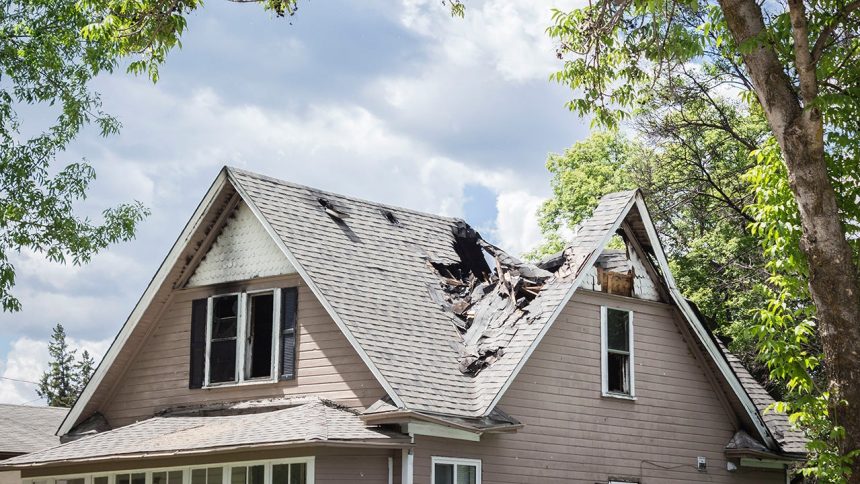Key takeaways
- Loss of use reimburses expenses incurred when your home is uninhabitable after a loss.
- Elective renovations and general maintenance are not covered by loss of use.
- Pet boarding, parking fees, moving expenses and laundry services are just a few of the expenses loss of use may cover.
If you’ve ever looked over your home insurance declaration page — or if you’ve had to file a claim after a loss — you may know what loss of use coverage is. This type of insurance is part of a standard homeowners policy, and it provides vital financial support in the event that a covered disaster strikes your home, such as a fire or windstorm. In this guide, we explain what loss of use coverage provides. We discuss how to calculate loss of use, when you may be able to take advantage of it and how it works for renters as well as condo or mobile home owners.
What is loss of use coverage?
Loss of use coverage is also called additional living expenses (ALE) insurance. On your policy’s declaration page, it’s listed as Coverage D, and is standard on almost all types of homeowners insurance, except for HO-1 policies, which are uncommon.
Loss of use coverage pays for the expenses you may have if you cannot live in your home after an approved claim. It generally includes hotel expenses, restaurant meals, pet boarding, laundry costs and more.
It’s important to note that it only applies if your claim is approved, and it does not cover costs if the damage to your home is from an event that is not included in your policy. For example, flood coverage is not part of most homeowners insurance policies. If your home is damaged in a flood and you do not have an additional flood policy, you won’t be able to use loss of use coverage.
You also cannot use it for routine maintenance or renovations. So if you need to move to a hotel when you’re doing a complete renovation of your first floor, you won’t be able to use loss of use insurance unless the renovation is being done because of a covered peril.
How does loss of use coverage work?
The details of how your loss of coverage insurance works will be specific to your insurer. Some companies, for example, may offer an advance against the claim’s settlement. Safeco Insurance is one company that offers an advance payment for hotel and other costs once the claim has been approved.
For other companies, you will pay the costs yourself up front and save your receipt. When you submit these receipts to your insurer, you will receive a check for the approved amount. For that reason, it’s important to keep all receipts for any expenses you incur while your home is uninhabitable.
Generally, there is a limit to loss of use coverage. Knowing how to calculate loss of use of your home insurance can be useful. With many insurers, loss of use is determined as a percentage of your dwelling coverage. If you have dwelling coverage of $300,000, for example, your loss of use might be 30 percent of that, or $90,000. You may be able to ask for higher limits if you think they are necessary, but this is likely to result in a higher cost for your policy.
What does loss of use coverage cover?
Loss of use coverage reimburses you for most living expenses to maintain your normal standard of living while you’re unable to live in your home due to a covered peril. The basic coverages include:
- Residency expenses such as motels, hotels, rentals or an apartment
- Expenses associated with moving your items to storage
- Fuel expenses if extending your work commute
- Parking fees if you move to a temporary residence that requires it
- Laundry expenses if you don’t have access to a washer or dryer.
- Pet boarding fees if you have to use pet boarding while you await repairs.
- Excess of normal fees for meals (say you normally cook at home but are unable to at your temporary place and have to eat at restaurants instead)
Every insurer offers slightly different coverage types, so check with your insurance provider to see which items they cover under your loss of use policy. You should also find out if there are any limitations, like a maximum benefit amount for temporary living expenses. Shopping around to find the best homeowners insurance company for your needs is one of the best ways to ensure you’re getting the right coverage.
Loss of use coverage for condos
Loss of use coverage works similarly for condo insurance. If your condo unit is damaged and you have to relocate, you would receive additional living expenses coverage through your HO-6 condo policy. To calculate your loss of use coverage limit, some insurance companies may combine your dwelling’s value with your personal property coverage.
Loss of use coverage for rentals
The same coverage applies to renters insurance policies in that the loss of use coverage helps you maintain your standard of living while you wait to move back into your rental. Insurance companies calculate your coverage limits based on a percentage of your personal property coverage.
In other instances, renters insurance companies may pay you a flat amount as outlined in your policy. It’s a good rule of thumb to speak with your insurance provider to learn more about how they calculate your benefit amount.
Loss of use coverage for mobile homes
Loss of use coverage for mobile homes functions similarly to coverage for traditional homes, providing financial support for additional living expenses if your mobile home becomes uninhabitable due to a covered peril. This coverage typically helps pay for temporary housing and other necessary costs incurred while your home is being repaired or replaced, up to your policy limit.
Given the unique nature of mobile homes, such as their susceptibility to certain types of damage and potential difficulties in relocation, it is crucial to review the specifics of your policy to ensure it provides adequate protection and understand any exclusions or conditions that may apply.
What does loss of use coverage not cover?
Insurance companies will typically help you pay for most of the expenses related to your temporary living situation. However, loss of use coverage doesn’t cover everything. Most notably, you can only utilize loss of use coverage if your home is damaged by a covered peril.
For example, damage caused by flooding or an earthquake isn’t covered by home insurance. Therefore, loss of use coverage wouldn’t apply if your home was severely damaged by either event. Loss of use coverage also can’t be used for things like elective renovations or general maintenance.
Loss of use coverage will also typically not pay for the regular expenses of homeownership which would continue while you are not living in your home. These might include your mortgage payment or utility bills.
Most insurance companies have a list of excluded expenses. If you have to file a claim, make sure you know what those exclusions are. That way, you can make informed spending decisions, knowing what is and isn’t covered.
How to get reimbursed for additional living expenses
If you have to use your additional living expense coverage, there are some things you can do to expedite the claims process:
- Save receipts for all essential expenses. Expenses including rent or hotel bills and moving costs can be covered by your loss of use coverage. Additionally, expenses like eating out at restaurants, boarding your pets, and any other costs that you incur may also be covered. Include receipts to help expedite the claims process.
- Check with your property insurer. When you file a claim, ask your insurance company about its claims process. Find out how long it usually takes to process, approve and reimburse your claim.
- Begin your claim. Depending on what your insurer offers, you can start to file your claim either online, in person, or over the phone. Most insurance companies have an online portal that allows you to upload relevant documents in a secure manner.
- Upload documentation. Most companies allow you to upload any supporting documentation that may be required, such as receipts and pictures.
- Make a checklist. Pay attention to any documentation the insurance company requires, and make a checklist of every step, so you don’t miss anything important.
If you forget a step or don’t provide all the required information, your claim could be delayed.
Frequently asked questions
Why we ask for feedback
Your feedback helps us improve our content and services. It takes less than a minute to
complete.
Your responses are anonymous and will only be used for improving our website.
Help us improve our content
Read the full article here














